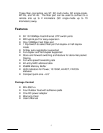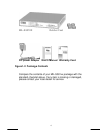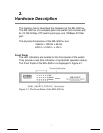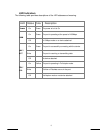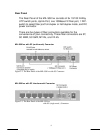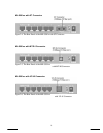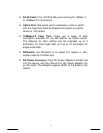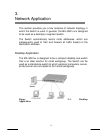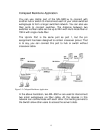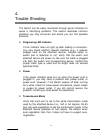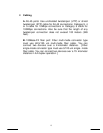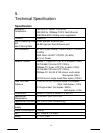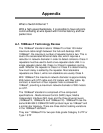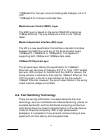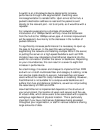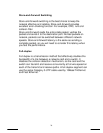
17
Appendix
What is Switch Ethernet ?
With a high-speed backplane, it is possible to have all ports
communicating at wire speed with minimal latency and low
packet loss
A-1. 100Base-T Technology Review
The 100BaseT standard retains 10BaseT's critical 100-meter
maximum cable length between the hub and desktop. With
100BaseT, the maximum number of repeater Hubs is two. This is
due to the accelerated Ethernet data rate, which requires a
reduction in network diameter in order to detect collisions. Class II
repeaters must be used to build a two-repeater-stack LAN. In a
single-repeater-stack LAN, Class I or Class II repeaters can be
used. Whether the repeater is Class I or Class II is determined by
how much delay is added by the repeater. Most stackable
repeaters are Class I, while non-stackable are usually Class II.
With 100BaseT,the maximum network diameter is approximately
205 meters with UTP cable and 412 meters with fiber cable. By
contrast, a maximum of four repeater hubs is allowed for
10BaseT, providing a maximum network diameter of 500 meters
on UTP.
The 100BaseT standard is comprised of five component
specifications - Media Access Control (MAC) layer, Media
Independent Interface (MII) layer and the three physical layers
(100BaseTX, 100BaseT4 and 100Base FX). 100BaseTX use the
same IEEE 802.3 CSMA/CD MAC protocol layer as 10BaseT and
a similar star topology. There are three distinct cabling variations
in the 100BaseT standard.
They are: *100BaseTX for two-pair data grade Category 5 UTP or
Type 1 STP



